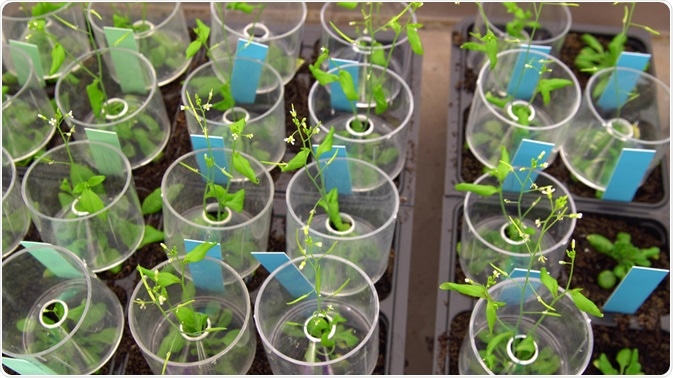The scientific perspective behind cell pattern formation involves observing both the commonly seen principles behind similar cell patterns seen in nature and the visible events of self-organization.
 Arabidopsis thaliana - a model organism for plant genetics. Image Credit: Tomas Vynikal/Shutterstock.com
Arabidopsis thaliana - a model organism for plant genetics. Image Credit: Tomas Vynikal/Shutterstock.com
The role of genetics
In developmental cell biology, the phrase “pattern formation” is used in reference to the propagation of complex organizations of cell fates in time and space. Pattern formation is mainly controlled via genes, such as homeobox type genes.
The vital role of genetics in pattern formation is a facet of morphogenesis: the creation of diversified anatomies from similar genes, which are now being examined in studies covering evolutionary developmental biology. The mechanisms that are involved can be observed in the anterior-posterior patterning of Drosophila melanogaster embryos, which were one of the first organisms to have had their morphogenesis studied.
Cell fate in maize
Mutations in the maize-defective kernel 1 (dek1) gene are blocked during embryogenesis, and the endosperm is chalky and lacks an aleurone layer. It has previously been seen in scientific studies that intermediate alleles can result in embryos that do not have a shoot axis, whilst the presence of weak alleles tends to result in endosperms with mosaic aleurone, as well as deformed plants that have epidermal cells that resemble bulliform cells (which is a specialized type of epidermal cell).
This, therefore, shows that the dek1 gene functions in cell fate specification, embryonic pattern formation, and generalized pattern formation in the leaf epidermis, as well as cell fate specificity in the endosperm.
Thus, the products of these genes appear to have significant control over the different cellular development processes, of course depending on the cellular context. The resulting phenotype of the weakened dek1-Dooner allele was found to be strikingly similar to the phenotype of the crinkly4 mutant. Double mutants with genetic changes being found between the dek1 and cr4 genes showed aspects of epistasis, synergy, and additivity – therefore suggesting that the final genetic products could function in several overlapping processes of development.
Gene analysis of the development of the maize aleurone was conducted in a scientific study, in which cell lineage was observed by synchronously marking its cells with a C1 marker for anthocyanin pigmentation within the aleurone, and with a wx1 marker for amylose synthesis inside the starchy endosperm.
The starchy endosperm and aleurone share a similar lineage in the entirety of their development, which indicates that certain positional cues could be observed to specify the fate of the aleurone. Mutations within in dek1 gene have also been found to block any aleurone formation from early stages, thus causing any peripheral endosperm cells to form and grow as starchy endosperm.
Cell fate in arabidopsis
The growth of plants, like all other multicellular eukaryotic organisms, is dependent upon the suitable specification of any distinctive types of cells. The development of plant cells that possess hairs within the epidermis has been utilized previously as an accessible model to study specific cell-fate specification.
For example, in the Arabidopsis plant, the root hair distribution inside the roots and trichomes on the shoots have been shown to differ greatly. Root-hair cells have been observed to develop in a pattern, dependent upon position, on top of the intercellular spaces that can be found in between any underlying cortical cells.
Conversely, the final spacing of any trichomes on the top surfaces of Arabidopsis stems, and leaves are in no way dependent upon the positioning of any underlying cells. In reality, these trichomes are distributed relatively regularly inside the epidermal cell fields, with their final spacing likely being due to the inhibitory interactions between biomolecular precursors during plant development.
Recent studies on this topic have also suggested that, although the vastly different distribution of the hair cells inside the shoots and roots, a similar biomolecular mechanism is responsible for the initial patterning inside both of these types of cells.
Further Reading
Last Updated: Jun 3, 2021